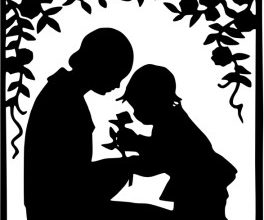“The Monsters Are Due on Maple Street,” is a teleplay written by Rod Serling for the TV series “The Twilight Zone.” Originally aired on March 4, 1959, the episode masterfully delves into the themes of paranoia, fear, and the fragility of human nature. The story revolves around the residents of Maple Street who become paranoid after experiencing a series of technological disruptions. They start accusing each other of being aliens in disguise, highlighting how fear and panic can lead to mass hysteria and the disintegration of a community. The episode has been widely regarded as a metaphor for the way fear and prejudice can spread, leading to the downfall of a previously peaceful neighborhood.
The Monsters Are Due on Maple Street | Summary
The story is set in a typical suburban neighborhood on Maple Street, where life is characterized by familiarity and tranquility. However, the peace is disrupted when a bright flash of light and a rumbling noise suddenly occur. The residents are puzzled and anxious, questioning whether it was an earthquake or something more ominous. This uncertainty sets the stage for the unfolding drama. As night falls, the power goes out, plunging the street into darkness. A young boy named Tommy claims to have read in a comic book that aliens are capable of disabling power sources. This sparks the first seeds of doubt and suspicion among the residents. Steve, one of the neighbors, tries to downplay the situation, but the fear has already taken root.
Charlie, another resident, becomes a focal point as he suggests the possibility of an alien invasion. He cites that the aliens could appear as ordinary humans, leading to a climate of distrust. Paranoia intensifies when they notice a strange figure standing at the end of the street. As he walks closer, the figure is revealed to be Pete Van Horn, a neighbor who had been returning from work. The tension escalates further. Phones do not work, and cars will not start. The residents start accusing each other, looking for any anomaly that could mark someone as an alien. Even the slightest deviation from the norm is met with suspicion. This portrayal of human behavior under pressure shines a light on how quickly communities can disintegrate in the face of the unknown.
Amidst the chaos, Les Goodman becomes a target due to his recent behavior of working on a ham radio late at night. This behavior, which was previously deemed harmless, is now interpreted as a sign of being an alien accomplice. The neighbors converge on Les’s house, and as the situation becomes more heated, shots are fired, and Les is killed. With this tragic turn of events, the street plummets into complete madness. The once-friendly neighbors turn on each other with shocking ferocity. The fear and paranoia have consumed them entirely, and reason is replaced by a mob mentality. The final twist reveals that the aliens are not extraterrestrial beings at all; they are manipulative human-like creatures exploiting Maple Street’s susceptibility to fear and discord.
The episode concludes with a poignant and cautionary monologue by Rod Serling himself, reflecting on the human capacity for cruelty and irrationality. The monsters on Maple Street were not from outer space but were the creation of their anxieties and prejudices.
The Monsters Are Due on Maple Street | Analysis
“The Monsters Are Due on Maple Street” masterfully employs tension and suspense to create a gripping narrative. Through its skillful storytelling and character development, the episode explores the vulnerability of human nature when faced with uncertainty and fear. The story effectively utilizes the backdrop of a seemingly idyllic suburban neighborhood to juxtapose the sudden intrusion of doubt and mistrust. The initial setup portrays Maple Street as a close-knit community, emphasizing the familiarity and comfort the residents share. This makes the subsequent breakdown of their unity even more impactful.
The pacing of the episode is deliberate, allowing the tension to escalate gradually. As inexplicable events unfold, such as the power outage and the unexplained noise, a sense of unease begins to permeate the neighborhood. The use of darkness, both literal and metaphorical, becomes a powerful tool to amplify the growing suspicion among the characters. Characterization plays a crucial role in the story’s development. Each resident represents a different facet of human behavior under pressure. Some characters, like Steve, initially attempt to maintain reason and calm. Others, like Charlie, embody paranoia and easily succumb to fear. The diversity of reactions showcases the spectrum of responses that can arise in times of crisis.
The transformation of the characters is starkly evident, particularly in the case of Les Goodman. Initially portrayed as a harmless and friendly neighbor, he becomes the tragic victim of the mob mentality that grips the street. This evolution highlights the fragility of social norms and the potential for drastic shifts in perception. The turning point of the story is the revelation that the true “monsters” are not extraterrestrial beings but the residents themselves. This twist effectively challenges the viewers’ assumptions and underscores the episode’s central message about the darkness that can reside within humans. The use of this twist serves as a cautionary tale, urging the audience to reflect on their capacity for irrationality and cruelty.
The Monsters Are Due on Maple Street | Themes
The story delves into how fear can quickly escalate into paranoia when people are confronted with the unknown. The residents of Maple Street go from being neighbors to accusing each other of being aliens solely based on fear and suspicion. This theme highlights how easily fear can lead to irrational behavior and the breakdown of social bonds.
The episode portrays how a sense of panic and mob mentality can spread like wildfire. Once the first accusation is made, the entire street becomes engulfed in a frenzy of suspicion and aggression. This highlights the dangerous potential of group thinking and the tendency of people to blindly follow the crowd, often with dire consequences.
As the events unfold, the veneer of civilization quickly erodes. The characters transition from a civilized and friendly neighborhood to a chaotic and hostile environment where violence and distrust reign. This loss of civilization illustrates how fragile the structures of society can be when faced with external pressure. The story also explores the idea of “us versus them,” where the residents turn against each other.
The twist ending of the story, where it is revealed that the true monsters are not aliens but the residents themselves, offers a strong commentary on the absurdity of prejudice and intolerance. The irony lies in the fact that the residents were so consumed by their paranoia that they became the very monsters they feared.
The idea that an external force can manipulate technology to sow discord and chaos among humans is another theme explored in the story. The mysterious power outage and the unexplained noises serve as tools to manipulate the residents’ emotions and behavior, emphasizing the vulnerability of society to external influences.
The residents of Maple Street are isolated from the rest of the world, which makes them vulnerable to manipulation and fear. This theme highlights how isolation can breed suspicion and intensify the impact of fear, ultimately leading to destructive behavior.
The story serves as a critique of mass hysteria and the dangers of collective panic. It warns against the consequences of allowing fear and misinformation to guide our actions and decisions, advocating for critical thinking and rationality.
As the story unfolds, the characters’ individuality becomes overshadowed by their shared paranoia. This loss of individuality underscores the dehumanizing effects of irrational fear, showing how it can reduce complex individuals to mere stereotypes and enemies.
The Monsters Are Due on Maple Street | Significance of the Title
The term “monsters” in the title can be interpreted in multiple ways. Initially, it refers to the belief that the residents of Maple Street have that aliens or some external, monstrous threat are responsible for the strange occurrences. However, as the story unfolds, it becomes evident that the real monsters are the humans themselves—driven by fear, paranoia, and prejudice. The title thus plays on the dual meaning of “monsters,” representing both the perceived external threat and the internal flaws of humanity.
The title sets up an expectation that the story might involve literal monsters, such as aliens or creatures. This subversion of expectations is a deliberate choice by Rod Serling, as the story turns out to be a commentary on human behavior and societal dynamics rather than a traditional sci-fi narrative. The title’s irony becomes evident when it is revealed that the true monsters are not the anticipated extraterrestrial beings but the ordinary people themselves.
The title subtly foreshadows the revelation at the end of the story, creating dramatic irony for the audience. Throughout the narrative, the characters are preoccupied with the idea of external monsters causing their problems, unaware of their capacity for cruelty and violence. The title serves to build suspense and anticipation while ultimately delivering a thought-provoking twist that challenges the audience’s assumptions.
By attributing the disturbances to “monsters,” the title reflects how easily humans can externalize their fears and insecurities. It suggests that people tend to blame external forces for their problems rather than confronting their own biases and weaknesses. This externalization is a central theme in the story, as the residents project their fears onto the idea of aliens rather than addressing their prejudices.
The title, with its focus on a specific location (“Maple Street”), hints at a localized and microcosmic representation of society at large. This suggests that the events on Maple Street are emblematic of broader societal tendencies, such as scapegoating, paranoia, and the potential for chaos when fear takes hold.
The Monsters Are Due on Maple Street | Literary Devices
The story is rich in irony. It begins with the idyllic portrayal of Maple Street as a peaceful suburban neighborhood, which serves as a stark contrast to the events that unfold later. The title itself is ironic, as the “monsters” are not the expected extraterrestrial beings but the human residents themselves.
The story alludes to larger societal issues, particularly the paranoia, and hysteria that can arise from the fear of the unknown. The reference to historical events like the Salem witch trials and the McCarthy era adds depth to the themes of prejudice and mass hysteria.
The dialogue in the story serves multiple purposes. It reveals the characters’ personalities, fears, and biases. The exchanges also create a sense of realism and help establish the suburban setting. As the story progresses, the dialogue becomes more frenzied and irrational, mirroring the escalating tension and paranoia.
The audience possesses more information than the characters, creating a sense of dramatic irony. The audience knows that no actual aliens are causing the disturbances, which enhances the audience’s understanding of the characters’ misguided actions and beliefs.
The story introduces a moral dilemma for the characters, where they must choose between maintaining their unity and succumbing to fear. This internal conflict adds depth to their characterization and drives the narrative forward.
The story can be interpreted as an allegory for the potential dangers of unchecked paranoia and prejudice within society. The events on Maple Street symbolize how quickly societal norms can disintegrate when fear takes hold.
In essence, this article investigates the social commentary that is made through this teleplay. Through an analytical and thematic discussion, it is clear that the teleplay serves as a warning to the chaos that can ensue in society as a result of the weak social order.


